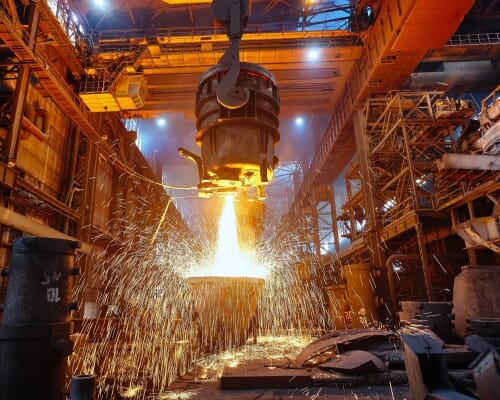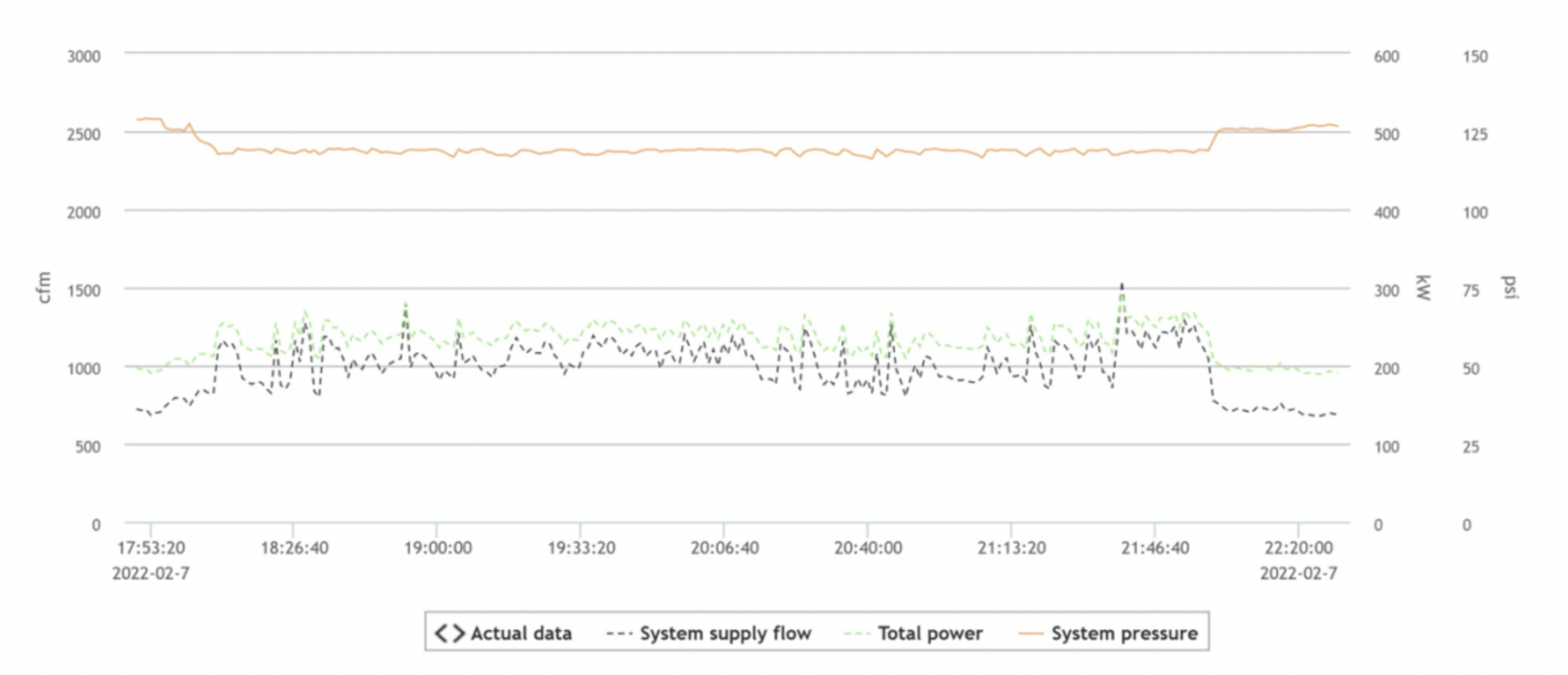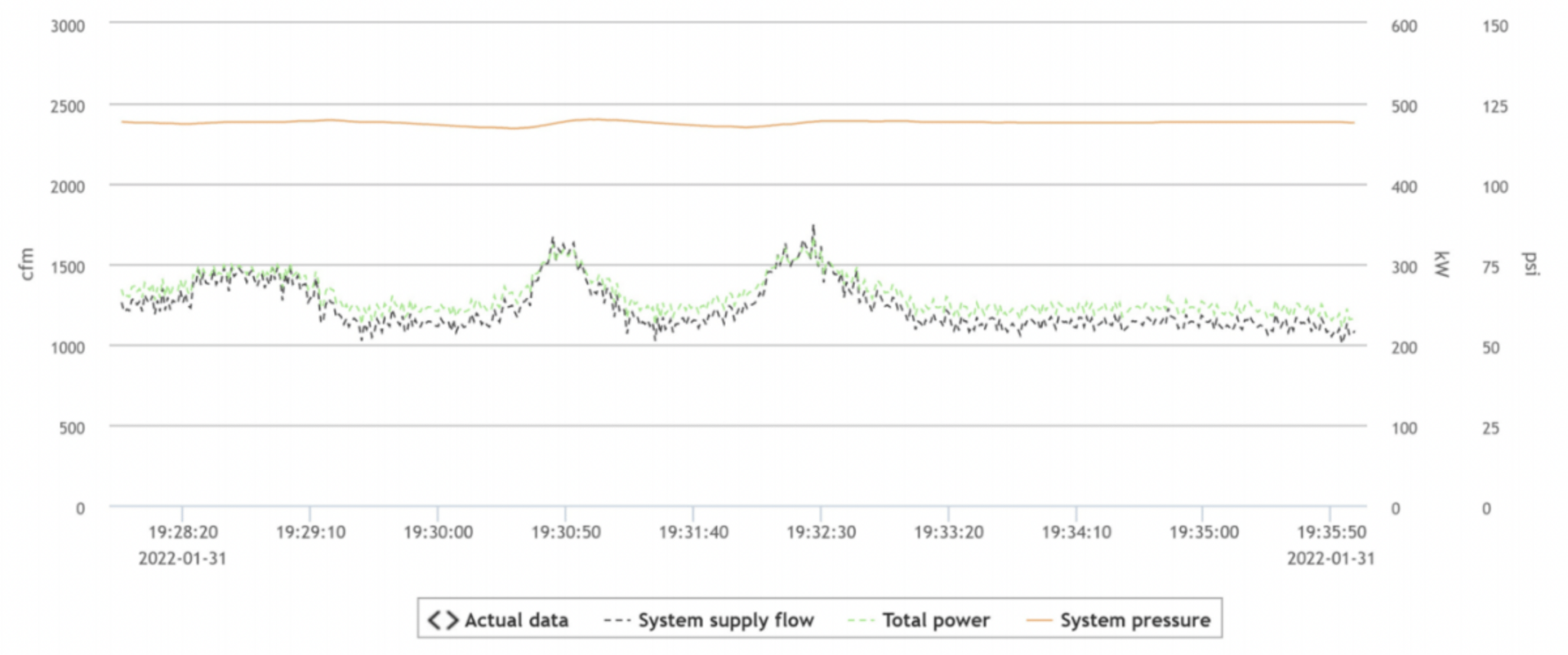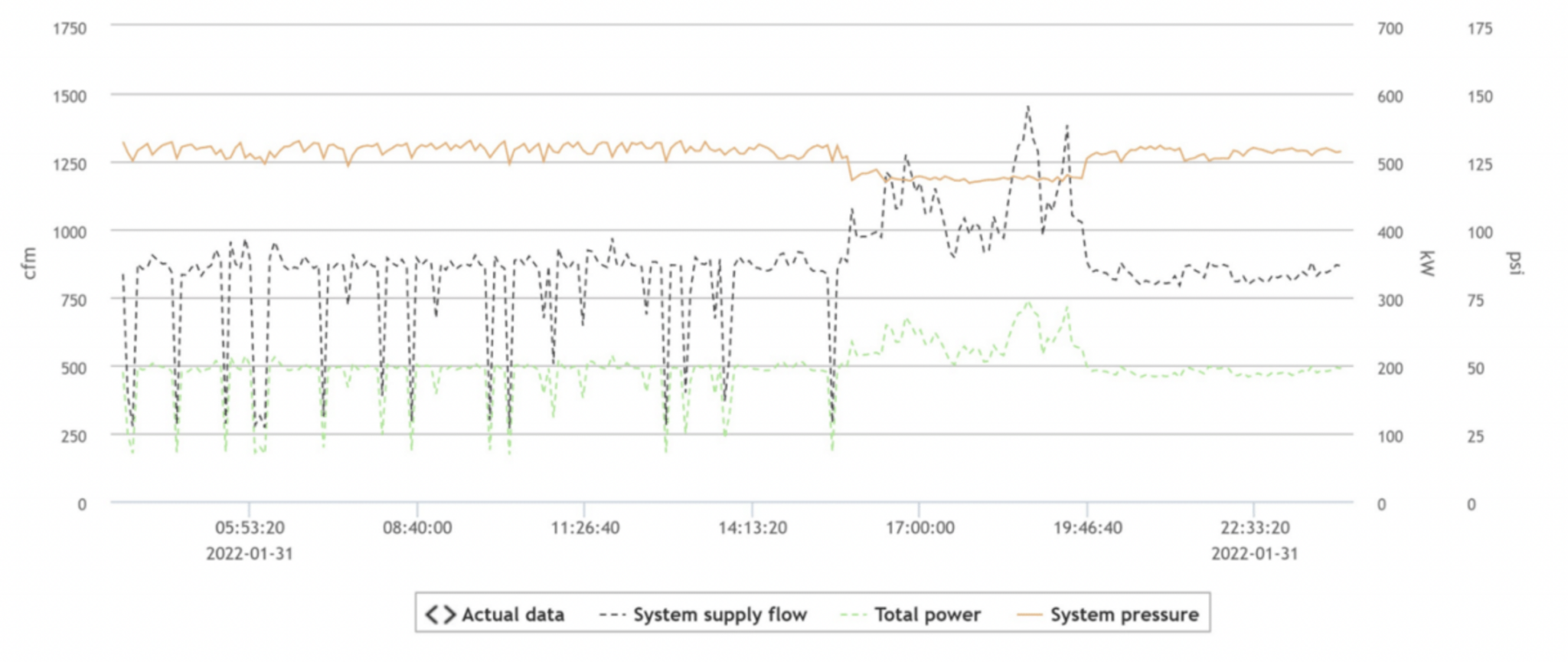
Air Compressor Cooling
April 19, 2023
The Ultimate Guide to Rotary Screw Compressor Maintenance
May 3, 2023When to Do a Compressed Air Audit, When to Do an Assessment
Kaishan USA | April 26, 2023 | Uncategorized

Air compressor assessment or audit? Which one does your company need?
A lot of confusion surrounds the topic of compressed air audits and assessments. Some accounts even use the terms interchangeably. But there are some crucial differences.
Which one is which? And what do you need for your system right now?
Air Compressor Assessment, Audit Defined
Two quick definitions:
- An assessment is a walkthrough, a visual inspection of your air compression system. It can usually be completed by your local air compressor professional in a few hours.
- An audit, on the other hand, is a much more detailed evaluation that takes seven to 14 days. It involves placing data-logging equipment at strategic points throughout your system to track key performance parameters and variations in demand across all your work shifts and over weekends.
When to do an Air Compressor Assessment
You’ll want to do an assessment if you have some minor performance issues or questions about maintenance. We often recommend a walkthrough with your air compressor professional at least quarterly, if not monthly.
When to do an Air Compressor Audit
You need to do an audit if you have frequent unplanned shutdowns. Or if performance is less than it should be. More importantly, you’ll want to do an audit in the following circumstances:
-
- When you’re consistently failing to meet pressure demands at the most remote parts of your system and have to turn on more compressors to meet the same demand as you did several days or weeks previously
- When energy efficiency is dropping
- When you’re experiencing significant downtime as a result of equipment failure
- When you’re considering the purchase of new equipment, especially when you’re trying to justify an expenditure for a new compressor (more on this one later)
If you’re still unsure, an assessment by an air compressor consultant or professional might be a good place to start.
What an Air Compressor Audit Involves
Obviously, an audit is a bigger commitment on your part. But it can pay huge dividends in cost savings and energy consumption. The benefits include improvements in system reliability, lifespan and overall performance.
The good news is that an audit will require little, if any, interruption in your operation. Once installed, the dataloggers chug away, recording critical parameters in your system and quantifying air flow, pressure drops, humidity, temperature and energy consumption.
Focus on Power Usage
The readings provide a complete picture of the supply side of your operation, telling you what your compressor is doing in various circumstances. And while many operators focus on pressure, the key parameter is power usage.

This visual from an actual audit shows that air demand (black dotted line) clearly peaks in late afternoon as the company’s packaging operation swings into high gear.
When the pressure drops, does the power use respond (to keep the pressure stable)? If your system is equipped with one, does the variable speed drive keep the pressure stable? And when the pressure is stabilized, does your compressor back off or at least stay at the same level?

This graph shows peak demand, with the compressor reaching its maximum flow during those two peaks in the center.
Looking at the entire picture this way can help identify load profile problems, inefficient operation or air quality and pressure and performance problems that may not be immediately apparent to the equipment operator.

We see the lower demand when the main compressor went down. As a result, efficiency drops.
Other Key Information from an Air Compressor Audit
Audits reveal all kinds of important information. For example, we might discover that you had higher flow in the afternoon when your packaging operation was in full swing.

This chart documents what happened to the pressure when the company’s main compressor failed over on a weekend and the backup units came online. It clearly shows that the system was not designed with enough backup capacity.
You might see that you don’t have enough storage to account for that sudden increase in demand. And that, rather than one large super-compressor, you can use a combination of backup and trim compressors to increase the performance and reliability of your system.
You can even analyze air quality, tracking key compressed air measurements like pressure, temperature and moisture/dewpoint.
Leak Detection
Compressed air systems lose between 30% and 50% of their volume to air compressor leaks, with poorly maintained systems running as high as 80%. (For more information, go to our recent blog on the topic, entitled, “Air Compressor Leaking? How to Find and Stop Leaks.”
Handheld leak detection devices have been available for some time and have been successful at helping companies locate the 80% of compressed air leaks that are not in the audible range.
And now there are newer, visual, acoustic imaging devices known as ultrasonic leak detection systems. They use multiple directional microphones to triangulate the position of a leak source, overlaying the leak’s ultrasonic “signal” on a video image of your plant.
Even more importantly, the device calculates the leak volume and the potential savings you can achieve by fixing it. If the leak is in a pipe 30 feet above the plant floor, for example, the system will provide a cost estimate of the annual savings. Then you can decide whether it is worth worrying about. Specifically, whether it’s worth putting up scaffolding or bringing in a lift.
The device can then do a printout you can give your maintenance people, enabling them to find and fix the leak.
Ultrasonic leak detection equipment addresses some of the limitations of handhelds mentioned above. They can screen out noise from other compressed air devices like handheld tools. And they’re less likely to misread signals reflecting off a wall or other flat surface. They can also detect leaks from sources like industrial gas lines, vacuum or steam pipes. And while that may not be your primary concern, it can lead to additional savings.
Top-level Benefits
In the final analysis, an air compressor audit can produce significant benefits to your organization:
-
- Reliability. An air compressor not operating at optimum levels could well break down, causing unplanned downtime and significant loss of production.
- Equipment lifespan. Anything that makes your system work harder could shorten the life of your compressor, supporting devices and end-use equipment.
- Operational improvements. Even minor adjustments in pressure or fixing the leaks in your system can significantly improve system performance. And many of those minor issues may not be apparent to your operators.
Most companies find an audit pays for itself many times over, as they record annual savings in the tens if not hundreds of thousands of dollars.
The critical question: is your system sized properly (with flow or storage) to meet your highest demand? And that leads to the biggest payoff from an audit: it often provides key data you can use to justify a capital investment in new equipment.

Having an air compressor professional conduct an audit could make a big difference in the performance and longevity of your system.
Consulting Help
Most companies do not have the skills in-house to conduct their own assessments, let alone an audit. That has become even more apparent as they find they no longer have in-house expertise to deal with advanced equipment like air compression systems.
Kaishan is fortunate to work with a nationwide network of independent distributors, who have the skills and experience to conduct air compressor assessments and audits. And can provide on-site help and consultation as needed. These factory-trained air compression experts have an investment in their local communities and can service your air compressor system without a problem.
Key Takeaways
-
- Terminology. An air compressor “assessment” and “audit” are sometimes used interchangeably, but there is a difference.
- Assessments. An air compressor assessment is a walkthrough or visual inspection of your system by an air compressor professional.
- Audit. An air compressor audit is a more comprehensive, seven- to 14-day evaluation of your system using data-logging equipment.
- What to do when. You’ll want to do an audit when you notice pressure drops, declining efficiency or an increase in downtime.
Get Help from the Experts
Audits and assessments of your air compressor system are critical components of a rotary screw air compressor maintenance program. The right evaluation at the right time can save you time and money and ensure your compressed air system is operating correctly. If you need help finding a qualified professional to conduct an audit, get in touch with the experts at Kaishan. Contact us today.
Random stat or
customer quote
textXXtext
text
A lot of confusion surrounds the topic of compressed air audits and assessments. Some accounts even use the terms interchangeably.

